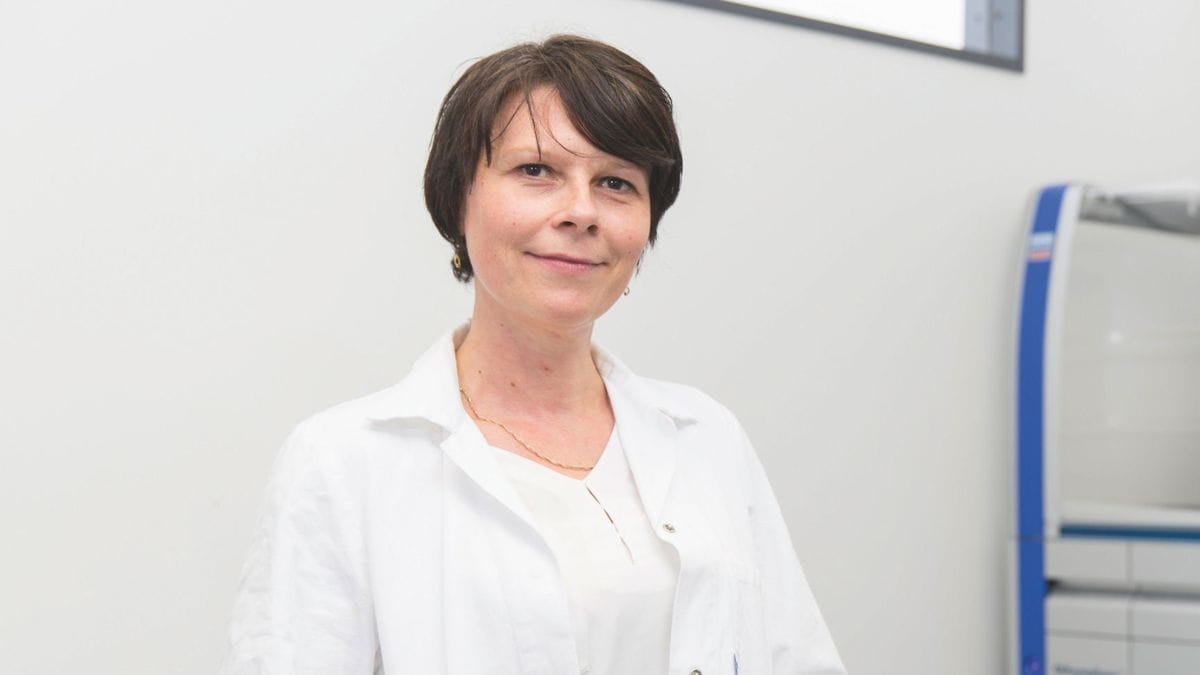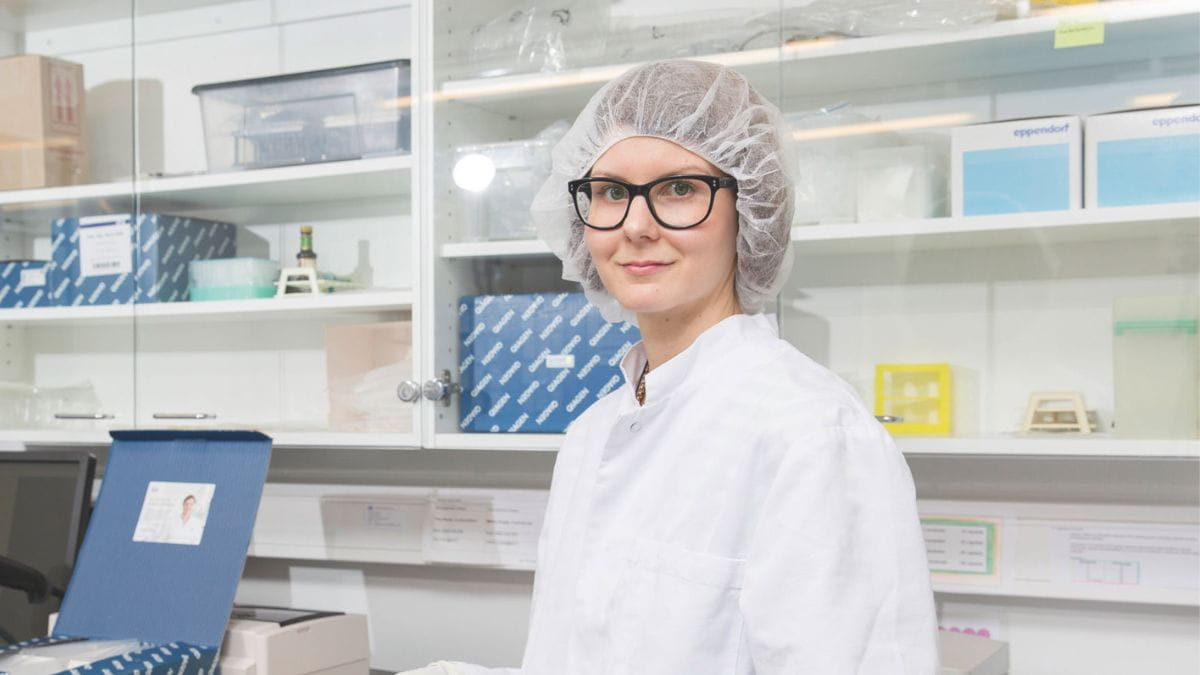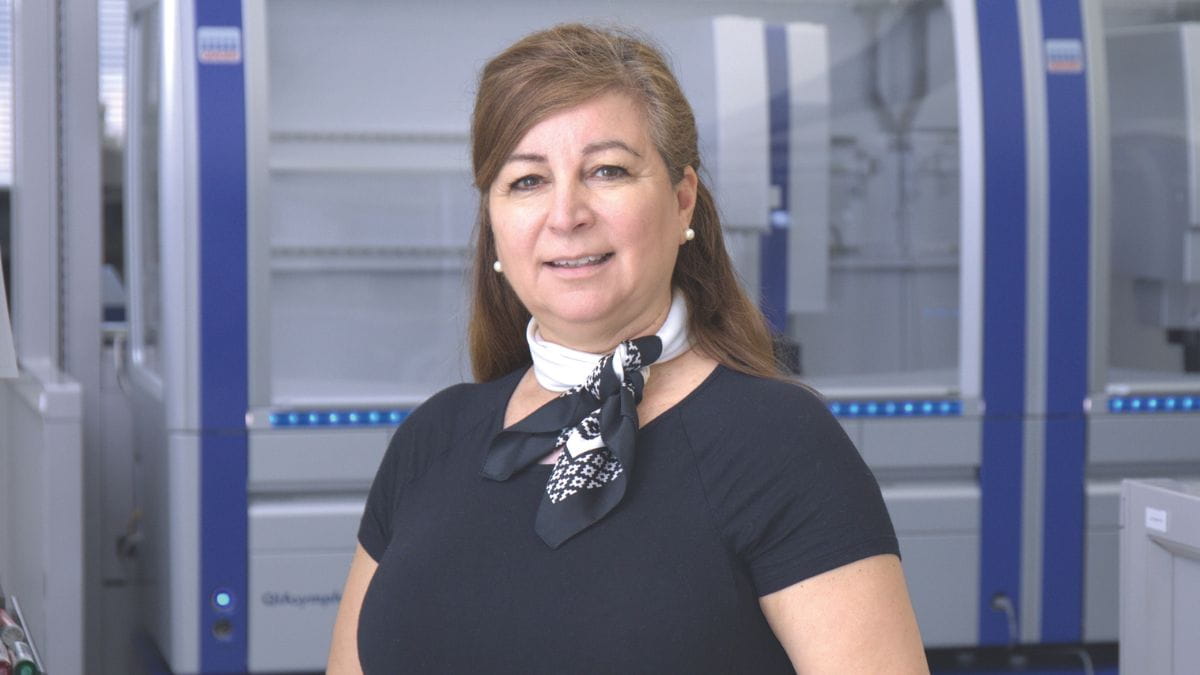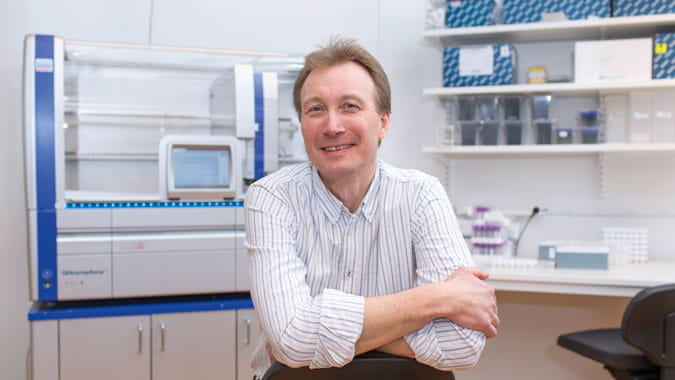
The following series of interviews features four experts from different countries and sectors, each discussing how the QIAsymphony system enhances their lab work, from processing forensic samples in Finland to conducting genetic research on canine health in Sweden.
Automation of DNA/RNA in diverse samples

Director of Production GATC BIOTECH, Konstanz, Germany
GATC Biotech is Europe’s leading sequencing services provider with its own laboratories in Cologne and Constance, Germany. It offers DNA and RNA sequencing and bioinformatics solutions to customers from academia, healthcare and pharmaceutical industry worldwide. The company’s mission is: ‘Improving the quality of life by analyzing nucleic acids.’ It contributes to the sequencing field with its own innovative products, scientific expertise and rigorous quality. The customer-oriented R&D enables successful scientific collaborations.
Q. What role does laboratory automation play at GATC Biotech?
A: Automation plays a very important role. We mostly use robotic systems because of their flexibility. In Cologne, we process about 50,000 Sanger sequencing samples a week – meaning approximately 10,000 every 24 hours. We have a very high automation grade, from sample arrival to data delivery. Every step is trackable in our LIMS, as the sample barcodes are scanned immediately after sample arrival.
Q: How is QIAsymphony used in GATC Biotech’s daily work?
A: It is used on a daily basis. We use it for the isolation of DNA and RNA for samples, which are analyzed by using next-generation sequencing. It is mainly used for blood and stool samples at the moment. Blood for applications like identification of cancer and other diseases, while stool samples, but also other sample material, are used for microbiome analysis. We also process samples from swabs.
Q: Why did you choose QIAsymphony?
A: What convinced us was the quality. GATC is a service provider, so we get a huge variation of samples, including blood that isn’t always stored as it should have been. Across this huge variety of incoming sample material and sample quality we found that QIAsymphony delivers the most stable results on quality and also on the amount of RNA we get from the isolates compared to other techniques.
Q: How has QIAsymphony affected GATC Biotech’s workflow?
A: Thinking about our product as a service provider, from isolation to data delivery, the workflow has become more stable due to automation of the first step: the sample processing part. QIAsymphony helps to eliminate many manual steps and frees up staff time.
Improving processing efficiently in forensic samples

BSc, Technician, DNA Examinations Police of Finland, Vantaa, Finland
Q: How important is lab automation to your organization?
A: It is very important for us because our sample amount has increased by roughly 10 percent every year. Automation saves time. It means our sample batches can be big, and it also decreases human error so that our results are more consistent and reliable. Here, in Finland, we only work office hours, so people aren’t here in the lab after 4pm – but automation can continue and the QIAsymphony can work independently overnight.
Q: How is automation used in your team’s daily work?
A: We have different kinds of robots here to extract DNA from crime scene samples and do pipetting. The most common samples we have are ‘touch samples,’ which are skin cells you can’t see with the naked eye. We also have blood samples, saliva and semen. Automation helps us ensure that our sample processing is trustworthy. That’s very important because we have to show the courthouse that our results are reliable.
Q: What has been your experience with QIAsymphony so far
A: It’s nice and easy to use. We usually run 80 samples per extraction run and the extraction chemistry is very good. It is also effective with weak samples. That’s important for us because the ‘touch samples’ we usually get here are weaker DNA samples but the QIAsymphony is still able to process them.
Q: What are the QIAsymphony system’s strengths?
A: Our collaboration with QIAGEN and its service works really well. QIAGEN gives us great customer service support for using the QIAsymphony and other equipment. We’ve even named our QIAsymphony ‘Sibelius’ after the famous Finnish composer – it was a good fit with ‘symphony’!
Reducing manual intervention and error

Professor of Pathology and Chair of the Molecular Diagnostics Division at VCU
Virginia Commonwealth University’s (VCU) Molecular Diagnostics Services division is part of the Department of Pathology in Richmond, Virginia. The laboratory offers infectious disease and oncology testing as well as tests for inherited disorders and various gene abnormalities. The staff also helps the to train pathology residents and to educate medical students at both the undergrad and post-grad level.
Q: How important is lab automation to your organization?
A: Automation has been in place in my lab for about 10 years but we have seen with new instrumentation, in particular with the QIAsymphony, that our systems are now completely automated. This has been crucial for us. What has also been important to us as these automated systems have evolved is the improved ability to process different kinds of specimens and specimen tubes that work well for molecular diagnostics – and therefore without the template cross-contamination that could give us false positives.
Q: How is QIAsymphony used in the laboratory’s daily work?
A: The beauty of the system is that it allows us to extract all the specimens at the same time. What’s more, the software is very user-friendly so we’ve been able to incorporate this in the testing with great results. More recently, we transferred all our genomic extraction to the QIAsymphony. This has allowed us to streamline our processes and decrease the amount of professional time devoted to DNA or RNA extraction.
Q: Why did the Molecular Diagnostics Services division opt to use QIAsymphony?
A: We selected the QIAsymphony because we have been working with QIAGEN products for many years and we have always been extremely satisfied with their high quality. When they came up with this automation, we paid attention due to their very strong track record on product quality and providing us with excellent customer service. And they haven’t disappointed us.
Q: How has QIAsymphony affected the laboratory’s workflow?
A: It has simplified our workflow significantly. We can extract all the specimens for different tests at the same time and then continue with all the different downstream processes. We can also load the instrument and let it run. It has made a significant, positive contribution to our workflow and increased the quality of the testing that we do.
Canine genetic research automation

Associate Professor, Swedish University of Agricultural Sciences
Q: How important is lab automation to your organization?
A: It is extremely important for our DNA extractions. We have around 3,000 samples per year, which is just too many to deal with by hand. We do DNA testing in a research setting, mainly for genetic variants associated with disease that our group has discovered. We’re constantly working on ways to increase the automation with different laboratory information management systems.
Q: Why did SLU choose QIAsymphony?
A: We really wanted something that was ready to use ‘out of the box’ for DNA extractions. The QIAsymphony is easy to use and didn’t require any programming or optimization. We wanted something that worked, enabling us to focus on other things.
Q: What are QIAsymphony’s main strengths?
A: QIAGEN is a huge organization that can support us if needed. If we run into a problem or a new kind of extraction, we contact QIAGEN to see if they have any tips on what to do. QIAGEN gets some strange questions from us, such as: Can we extract DNA from an insect’s intestines using the QIAsymphony or would a manual kit be better?
Q: Which QIAsymphony features are most important to your work?
A: Its robustness, the integrity of the samples and not having any sample mixups. For us, perhaps the most important thing is minimizing the risk of mixing up samples that exists if you do everything manually. Everyone has experienced having to throw everything away and start all over again halfway through multiple extractions. The QIAsymphony prevents that.
Q: How is QIAsymphony used in your laboratory’s daily work?
A: Our usage is extremely varied. The majority is for research purposes, such as DNA extractions from blood samples for disease testing and taking samples for the Canine Biobank. We also offer dog owners the opportunity to have DNA tests of their dogs. That’s semi-commercial because the dog owners pay and, more importantly, it gives us more samples for further research.